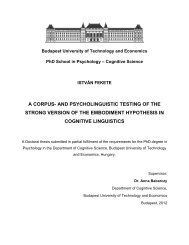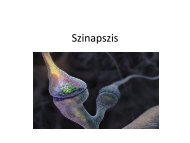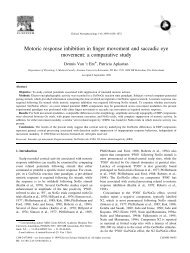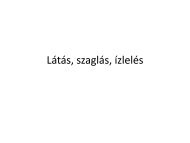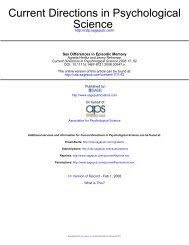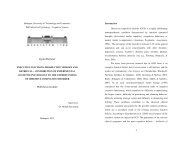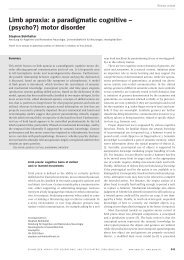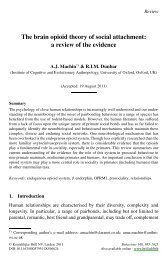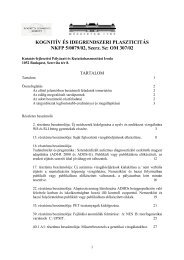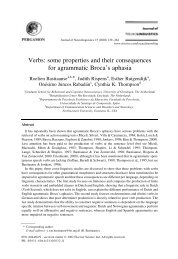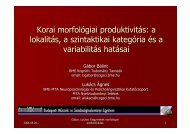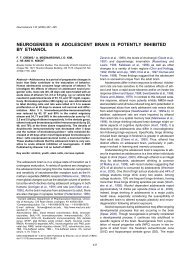Gyula Demeter
Gyula Demeter
Gyula Demeter
You also want an ePaper? Increase the reach of your titles
YUMPU automatically turns print PDFs into web optimized ePapers that Google loves.
3.2.2. Main cortical structures and neuronal networks involved in PM – connections<br />
with OCD<br />
The relationship between monitoring functions of PM cues and OCD symptoms is also<br />
interesting from the perspective of neuroimaging studies. A series of studies found evidence<br />
that the rostral prefrontal cortex (BA10) is involved in PM (Burgess, Quayle, & Frith, 2001;<br />
Burgess, Scott, & Frith, 2003; Simons, Schölvinck, Gilbert, Frith, & Burgess, 2006).<br />
In a positron emission tomography (PET) study Burgess et al. (2001) demonstrated that<br />
different cortical areas are involved in the maintenance and realization of intentions. They<br />
found increased regional cerebral blood flow (rCBF) in the frontal pole bilaterally, in the right<br />
lateral prefrontal, inferior parietal cortex and the precuneus, and decreased rCBF in the insula<br />
in the left hemisphere when healthy participants maintained and realized an intention. In<br />
contrast, they found increased rCBF in the right thalamus and decreased rCBF in the right<br />
dorsolateral prefrontal cortex when subjects executed versus maintained an intention.<br />
Putting these results together with attention theories Burgess and his colleagues<br />
(Burgess et al., 2003, Burgess, Simons, Dumontheil, & Gilbert, 2005; Burgess, Gilbert, &<br />
Dumontheil, 2007a, Burgess, Gilbert, & Dumontheil, 2007b) outlined the ‘gateway<br />
hypothesis’ which makes a distinction between stimulus-oriented (SO) and stimulus-<br />
independent attending (SI) (McGuire, Paulesu, Frackowiak, & Frith, 1996). The former is<br />
involved in the processing of the present sensory input, while the latter is required in the<br />
realization of self-generated or self-maintained thoughts. According to the hypothesis SO<br />
attending is supported by the medial rostral PFC while SI cognition by the lateral rostral PFC<br />
which means that the former is mainly involved in suppressing internally generated thoughts<br />
while the latter in intention maintenance (Burgess, Gilbert, & Dumontheil, 2007c).<br />
We think that OCD patients might have difficulties in SI attending, which has also a<br />
negative effect to the SO attending. It is possible that in OCD the maintenance of the intention<br />
requires extra SI attentional processes, which impairs the execution of the ongoing activities<br />
(SO attending).<br />
On the other a hand there is evidence that PM is more sensitive to executive functions<br />
deficits than to retrospective storage impairments (Kopp & Thone-Otto, 2003; Kliegel et al.,<br />
2004). This pattern of findings supports the idea that PM may more strongly rely on<br />
prefrontally mediated (executive control) processes than on temporally mediated<br />
(retrospective memory) processes (Brunfaut, Vanoverberghe, & d’Ydewalle, 2000; McDaniel,<br />
Glisky, Rubin, Guynn, & Routhieaux, 1999). Specific subprocesses of PM – as planning of an<br />
32



